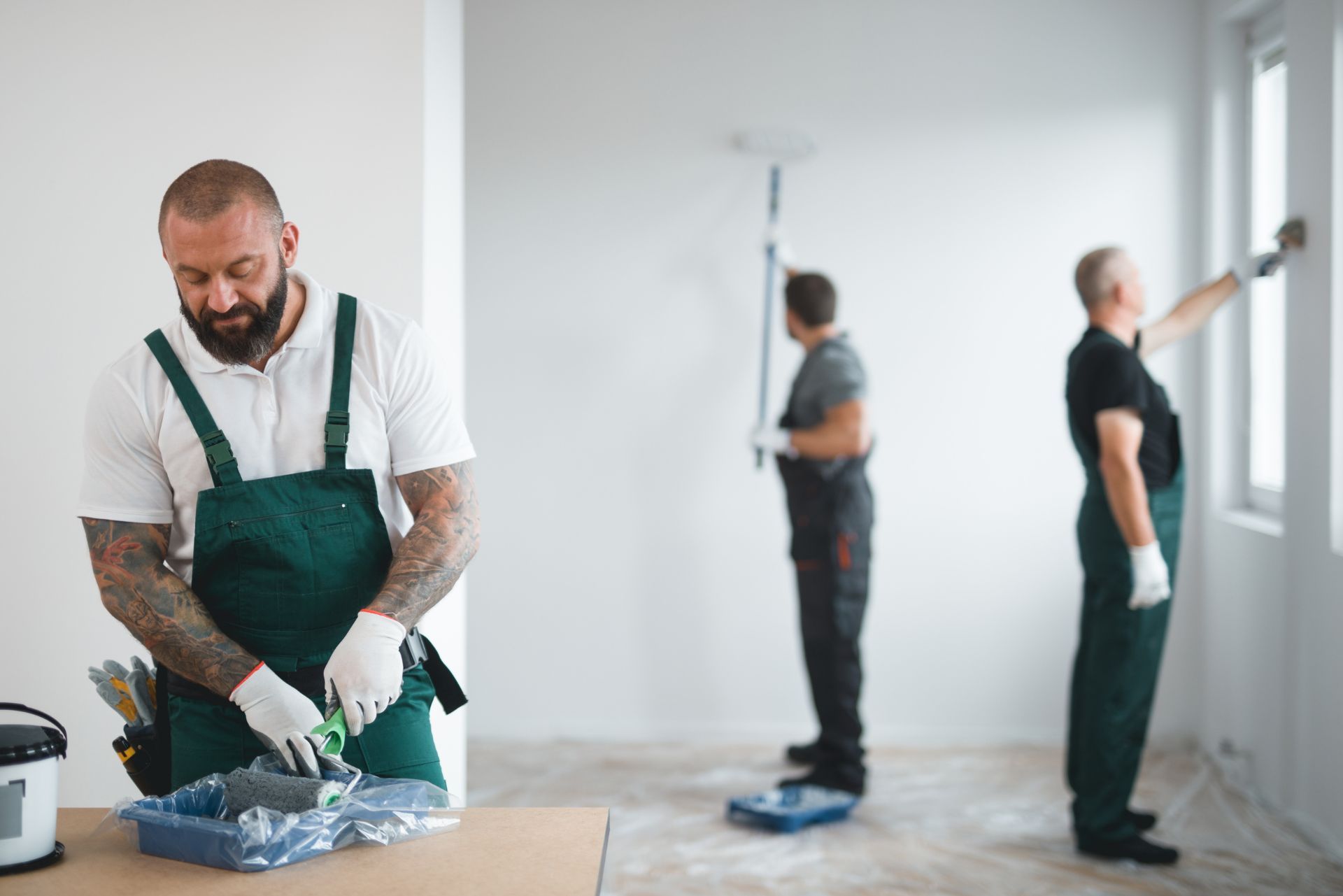Top 3 Recommended Policies

When it comes to leasing commercial property, understanding the intricacies of tenant improvements and betterments insurance is crucial for both landlords and tenants. This type of insurance can protect the investments made in a leased space, ensuring that both parties are safeguarded against potential losses. In this comprehensive guide, we will explore what tenant improvements and betterments insurance entails, its significance, coverage options, and how to navigate this essential aspect of commercial leasing.
Understanding Tenant Improvements and Betterments
Before delving into the specifics of insurance, it’s important to clarify what tenant improvements and betterments are. These terms refer to the alterations or enhancements made to a leased property to suit the tenant's business needs.
What Are Tenant Improvements?
Tenant improvements (TIs) are modifications made to the interior of a commercial space. These can range from simple cosmetic changes, like painting and flooring, to more complex renovations, such as installing new walls or plumbing systems. The primary goal of TIs is to create a functional and appealing environment for the tenant's operations.
Typically, the responsibility for TIs falls on the tenant, although negotiations may vary based on the lease agreement. Landlords may offer a tenant improvement allowance, which is a specified amount of money to assist in covering these costs. This allowance can be a crucial factor in a tenant's decision-making process, as it can significantly reduce the financial burden of creating a customized space. Additionally, tenants often need to work closely with contractors and designers to ensure that the improvements align with both their vision and the landlord's requirements, making the planning phase a collaborative effort.
What Are Betterments?
Betterments refer to enhancements made to a property that increase its value or utility beyond the original condition. Unlike tenant improvements, which are often reversible, betterments are usually more permanent changes. Examples include upgrading electrical systems, installing high-efficiency HVAC units, or adding new fixtures that improve the functionality of the space.
In many cases, betterments are considered part of the property itself and may not be easily removed by the tenant. This distinction is essential when discussing insurance coverage, as betterments may require different considerations than standard tenant improvements. For instance, tenants may need to ensure that their insurance policies adequately cover these enhancements, as they could represent a significant investment. Furthermore, understanding the implications of betterments can also influence a tenant's long-term strategy for leasing, as these improvements can enhance the overall marketability of the space should they choose to relocate in the future. By making thoughtful betterments, tenants not only improve their immediate work environment but also contribute to the property’s overall value, which can be beneficial for both parties involved in the lease agreement.

The Importance of Tenant Improvements and Betterments Insurance
Tenant improvements and betterments insurance is a specialized coverage designed to protect the financial investments made by tenants in leased spaces. Understanding its importance can help both landlords and tenants make informed decisions regarding their insurance needs.
Protecting Investments
For tenants, the money spent on improvements can be substantial. Without adequate insurance coverage, a tenant could face significant financial losses if the property is damaged or destroyed. Tenant improvements and betterments insurance provides a safety net, ensuring that these investments are safeguarded against unforeseen events. This type of insurance typically covers enhancements such as custom fixtures, flooring, and even specialized electrical or plumbing work that a tenant may undertake to tailor the space to their business needs.
Landlords also benefit from this insurance, as it can help maintain the overall value of their property. When tenants are protected, they are more likely to invest in the property, leading to a well-maintained and appealing space that attracts new tenants. Furthermore, properties that are consistently upgraded with tenant improvements can command higher rental rates, thus increasing the landlord's return on investment. This symbiotic relationship fosters a sense of community and responsibility, encouraging tenants to take pride in their leased spaces.
Lease Obligations
Many commercial leases include clauses that outline the responsibilities of tenants regarding improvements and alterations. These clauses often specify what types of insurance are required. Having tenant improvements and betterments insurance can help tenants comply with these lease obligations, avoiding potential disputes with landlords. This compliance is particularly crucial in industries where the nature of the business may require extensive modifications to the space, such as restaurants or retail stores, where ambiance and functionality are key to success.
Additionally, if a tenant fails to maintain adequate insurance, landlords may be held liable for any damages incurred, leading to costly legal battles. Thus, ensuring that both parties are appropriately insured is beneficial for maintaining a harmonious landlord-tenant relationship. Moreover, clear communication about insurance requirements and responsibilities can prevent misunderstandings and foster a cooperative environment, where both landlords and tenants feel secure in their investments. This proactive approach not only protects financial interests but also enhances the overall tenant experience, contributing to longer lease terms and reduced turnover rates.
Tenant improvements and betterments insurance can vary widely in terms of coverage options. Understanding these options is crucial for selecting the right policy to meet specific needs.
Types of Coverage
Generally, tenant improvements and betterments insurance can be categorized into two main types: named perils and all-risk coverage. Named perils coverage protects against specific risks, such as fire, theft, or vandalism. In contrast, all-risk coverage provides broader protection, covering any risks not explicitly excluded in the policy.
Choosing between these options depends on the tenant’s risk tolerance and the nature of their improvements. For instance, a tenant who has invested heavily in custom fixtures may prefer all-risk coverage for peace of mind. Additionally, it is important for tenants to consider the specific risks associated with their location. For example, businesses in areas prone to natural disasters may find that all-risk coverage offers a more comprehensive safety net against unforeseen events like floods or earthquakes, which might not be covered under a named perils policy.
Policy Limits and Deductibles
When selecting a policy, it’s essential to consider the coverage limits and deductibles. Coverage limits refer to the maximum amount the insurance company will pay in the event of a claim. Tenants should ensure that their coverage limits adequately reflect the value of their improvements and betterments.
Deductibles, on the other hand, are the out-of-pocket expenses a tenant must pay before the insurance kicks in. A higher deductible may lower the premium but could lead to significant costs in the event of a claim. Striking the right balance is crucial for effective financial planning. Furthermore, tenants should also evaluate the potential for future improvements or renovations, as these can affect the overall value of the insured property. Regularly reviewing and updating the policy to reflect new investments can help ensure that coverage remains adequate and that tenants are not left vulnerable to losses that exceed their policy limits.
How to Choose the Right Insurance Policy
Choosing the right tenant improvements and betterments insurance policy can be a daunting task. However, by following a systematic approach, tenants can make informed decisions that best suit their needs.
Assessing Your Needs
The first step in selecting an insurance policy is to assess the specific needs related to tenant improvements and betterments. This includes evaluating the total cost of improvements, the potential risks involved, and the overall value of the leased space. Understanding these factors will help in determining the appropriate coverage limits and types of insurance needed.
Additionally, it’s essential to consider the lease agreement and any obligations related to insurance coverage. This assessment will ensure compliance and avoid any potential conflicts with the landlord. For instance, certain lease agreements may require tenants to carry specific types of insurance or maintain minimum coverage levels, which can significantly influence the choice of policy. Furthermore, tenants should also evaluate the nature of their business operations, as different industries may face unique risks that necessitate specialized coverage options.
Consulting with Insurance Professionals
Engaging with insurance professionals can provide valuable insights into the best coverage options available. Insurance agents or brokers specializing in commercial insurance can help tenants navigate the complexities of tenant improvements and betterments insurance.
These professionals can offer tailored advice based on the specific circumstances of the tenant’s business, ensuring that they are adequately protected without overspending on unnecessary coverage. They can also assist in comparing different policies and understanding the fine print, which often contains critical details regarding exclusions and limitations. Moreover, insurance professionals can help tenants stay updated on any changes in regulations or market trends that could impact their insurance needs, ensuring that their coverage remains relevant and effective over time.
In addition to consulting with professionals, tenants should also consider seeking recommendations from other business owners or industry peers. Networking can provide firsthand insights into which insurance providers offer the best service and coverage options, as well as any potential pitfalls to avoid. Engaging in discussions about experiences with claims processes can further illuminate the reliability of various insurance companies, helping tenants make a more informed decision.
Common Exclusions in Tenant Improvements and Betterments Insurance
While tenant improvements and betterments insurance provides essential coverage, it’s crucial to be aware of common exclusions that may apply. Understanding these exclusions can prevent unpleasant surprises when filing a claim.
Wear and Tear
Most insurance policies do not cover damages resulting from normal wear and tear. This means that if an improvement deteriorates over time due to regular use, the insurance policy will not cover the costs of repair or replacement. Tenants should plan for maintenance and repairs as part of their overall budget. It's advisable for tenants to regularly assess the condition of their improvements and set aside funds specifically for upkeep. This proactive approach not only helps in managing costs but also ensures that the leased space remains functional and appealing to both employees and clients.
Intentional Damage
Insurance policies typically exclude coverage for damages caused by intentional acts. If a tenant or their employees intentionally damage improvements or betterments, the insurance will not cover the costs associated with repairs. This exclusion emphasizes the importance of maintaining a responsible and professional environment within the leased space. Furthermore, tenants should consider implementing clear policies and training for employees regarding the use of the space and its improvements. By fostering a culture of respect for the property, tenants can mitigate the risk of intentional damage and the potential financial burden that comes with it.
Natural Disasters
Another common exclusion in tenant improvements and betterments insurance is damage caused by natural disasters such as floods, earthquakes, or hurricanes. These events can lead to significant destruction, and without specific coverage, tenants may find themselves facing substantial out-of-pocket expenses. It’s essential for tenants to evaluate their risk exposure based on the geographical location of their leased premises. In areas prone to natural disasters, seeking additional coverage or a separate policy may be a wise decision to ensure comprehensive protection against such unpredictable events.
Negligence
Negligence is another factor that can lead to exclusions in tenant improvements and betterments insurance. If damage occurs due to a tenant's failure to maintain the property or adhere to safety regulations, the insurance may deny the claim. This highlights the importance of not only keeping up with regular maintenance but also understanding and following any guidelines set forth in the lease agreement. Tenants should document their maintenance efforts and stay informed about any changes in regulations that may affect their responsibilities, thereby safeguarding their investments and ensuring compliance with insurance requirements.

The Claims Process for Tenant Improvements and Betterments Insurance
Understanding the claims process for tenant improvements and betterments insurance is essential for tenants who may need to file a claim due to damage or loss. A clear understanding of this process can streamline the experience and ensure that claims are handled efficiently.
Documenting Improvements
Before filing a claim, tenants should ensure that they have thoroughly documented their improvements and betterments. This includes keeping records of receipts, photographs, and any relevant contracts. Proper documentation can significantly expedite the claims process and support the tenant’s case when filing. It is also advisable to maintain a detailed inventory of all improvements made, including dates of installation and costs incurred. This not only serves as proof of the enhancements but can also provide a clearer picture of the overall value added to the property, which may be beneficial during negotiations with the insurance company.
Filing a Claim
When damage occurs, the tenant should promptly notify their insurance provider. Most policies require claims to be reported within a specific timeframe, so acting quickly is crucial. The insurance company will then guide the tenant through the claims process, which may involve an assessment of the damages and a review of the documentation provided. It is important for tenants to be proactive during this stage; they should ask questions and seek clarification on any aspects of the process that are unclear. This engagement can help ensure that they are fully aware of their rights and responsibilities under the policy.
Once the claim is approved, the insurance company will issue payment based on the policy terms. Tenants should be prepared for potential negotiations regarding the claim amount, especially if there are discrepancies in the estimated value of the improvements. Additionally, understanding the specific coverage limits and exclusions of their policy can empower tenants to advocate more effectively for their claims. In some cases, it may be beneficial to consult with a claims adjuster or a legal professional who specializes in insurance matters to navigate complex situations or disputes that may arise during the claims process. This expert guidance can be invaluable in ensuring that tenants receive the compensation they are entitled to for their improvements and betterments.
Conclusion
Tenant improvements and betterments insurance is an essential aspect of commercial leasing that protects both tenants and landlords. By understanding the definitions, importance, coverage options, and claims processes associated with this type of insurance, tenants can make informed decisions that safeguard their investments.
As the commercial real estate landscape continues to evolve, staying informed about tenant improvements and betterments insurance will ensure that both parties can navigate their responsibilities effectively. Whether you are a tenant looking to enhance your leased space or a landlord wanting to maintain the value of your property, understanding this insurance is key to a successful leasing experience.
In conclusion, investing time and resources into understanding tenant improvements and betterments insurance can lead to a more secure and harmonious relationship between landlords and tenants. By prioritizing adequate coverage and maintaining open communication, both parties can thrive in their commercial endeavors.
Contact Us


